What is a connected lighting system
A connected lighting system designed for use in a smart building refers to a networked, intelligent light fixture that is managed in a centralized or distributed way by a building automation system (BAS), building management system (BMS), light management system (LMS), and/or IP-enabled control devices. Commercial, institutional, educational, hospitality and healthcare facilities such as office buildings, hospitals, hotels, malls, warehouses, school and college buildings leverage the growing digitalization and interconnection of physical objects brought about by the Internet of Things (IoT) to deliver new ways of facility management. The accelerating adoption of smart building technology drives the development of innovative lighting products and solutions that can utilize the network infrastructure in the building to contribute to the optimization of building operations. A connected lighting system such as ceiling light, troffer, shop light or recessed downlight is no longer just about sensor-driven and remotely controllable fixture. It participates in IoT transformation of commercial buildings to create an environment of improved engagement, productivity and sustainability.
What is a smart building
A smart building is a supersystem of interconnected, interdependent and intelligent building systems. It unifies heating, ventilation and air conditioning (HVAC), energy management, lighting, climate control, audio/video, physical security, life safety (fire detection, fire suppression, emergency warning), and other building systems into a digital ecosystem in which all these systems are commissioned, operated, and managed in a holistic, dynamic way based on global objectives. Building management systems and controls that previously existed in silos and are rule-based and reactive, rather than adaptive, context-away and autonomous. In a smart building, whole-building-level controls are implemented to automate operations based on dynamic and shifting conditions that impact operational efficiencies and occupant satisfaction.
Smart building technology capitalizes on the unique integration of information technologies (IT) and operational technologies (OT) to deliver an immersive technology experience to building occupants while maintaining operational costs within sustainable levels. Operational technologies work in real-time on physical systems and bridges isolated islands of automation. Information technologies support data processing, communication and decision-making to move building management from automation to autonomy.
The Building Internet of Things (BIoT)
The integration of building management with IT and OT as well as the growing use of network connectivity and cloud-based computing drives the trend toward IoT, and more recently the Building Internet of Things (BIoT). As smart buildings are being transformed by a wide variety of innovative solutions and heterogeneous systems, so do the complexities to managing these buildings. BIoT technology establishes a communication between all building systems and the Internet through ubiquitous connectivity and the Internet Protocol (IP) communication. It builds technical interoperability, syntactic interoperability, semantic interoperability, and organizational interoperability into all interconnected building systems to cope with the complex nature, dynamic changes and sustainability requirements.
In the context of the BIoT, the homogeneous and heterogeneous systems such as sensor networks, lighting control systems, HVAC control systems, power management systems, window shading systems, access control systems and fire alarm systems can collaborate among themselves to perform coordinated actions. In addition to the enablement of machine-to-machine interaction (M2M) between the homogeneous systems, BIoT introduces artificial intelligence (AI), machine learning (ML), big data processing, and other advanced capabilities from the cloud to increase smarts and intelligence beyond what an individual system alone can deliver.
Data is what makes a building smart and responsive to challenges
As a cyber-physical system, a smart building uses an integrated set of physical infrastructure, software technology and digital networking to manage and optimize the operations and interactions between different systems. The constantly evolving building automation system (BAS) is the foundation of the physical infrastructure of a smart building. A BAS is a computer-based control system that is used to coordinate, organize, and optimize the operations of building equipment and systems. A traditional BAS operates on preset schedules and set points. A smart building calls for intelligence beyond pre-programmed control logic. This need is accommodated by an integrated building management system (IBMS) which integrates and orchestrates the built environment in the IoT context.
The IoT-based building management system aggregates the data produced from different fragments of the physical infrastructure in the IoT platform where thoughtful analysis can occur. Just as knowledge is what makes people able to think, reason, solve problems and learn new information, data is what makes a building smart and responsive to challenges. The huge amount of data is managed on the platform as a valuable asset that can be harnessed to drive insights into operations and enable data-driven decision making. The IoT platform bonds the hardware, network and software to facilitate information exchange between IoT devices and IoT applications. It provides device connectivity and device management to push automation capabilities to the limits and maximize network scalability for capacity upgrades. An application enablement component provides a set of tools that assists in prototyping, building, integrating, and managing IoT applications. Security provisioning across the entire IoT stack is also an essential ability the IoT platform.
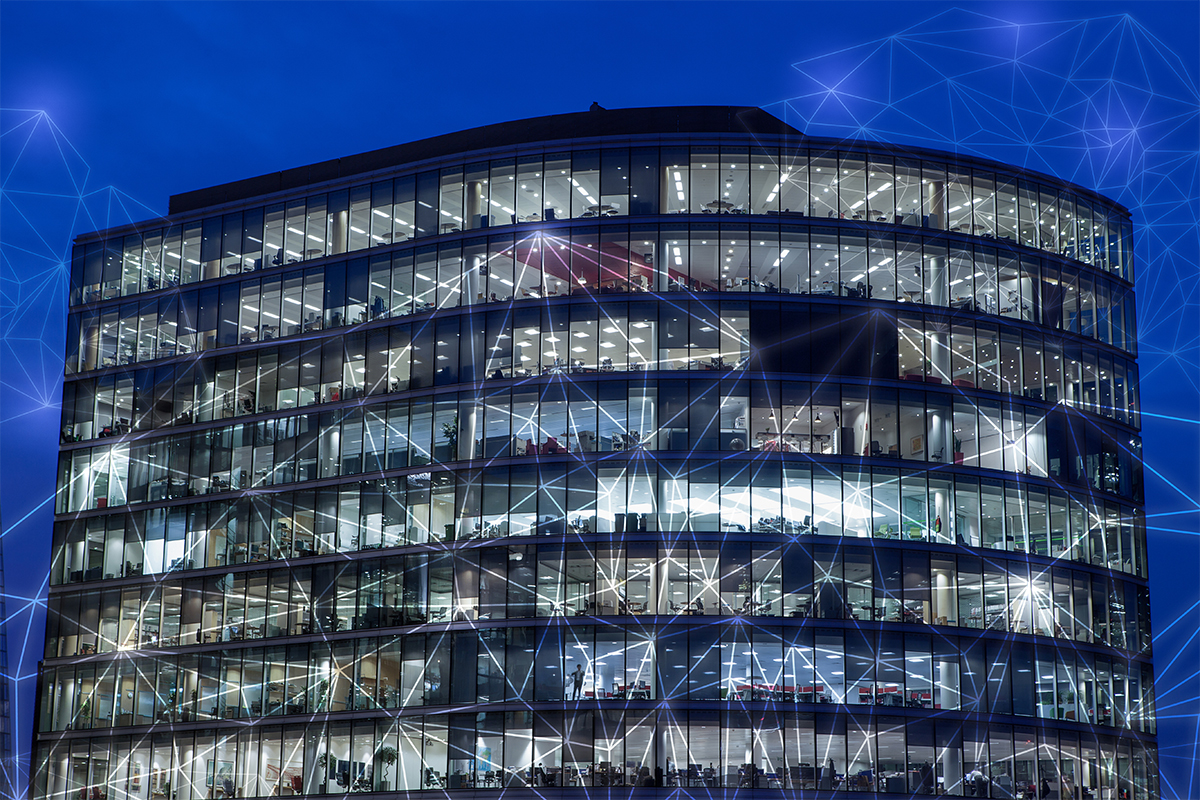
Centralized orchestration of distributed, interoperable assets
By deploying an IoT-based BMS to monitor, manage and automate the mechanical, electrical and electromechanical functions on a facility-wide basis, buildings are getting smarter in responding to evolving energy conservation challenges and growing user expectations. HVAC, lighting, window shading, elevators, life safety, and security systems operate and collaborate under the BIoT framework to make buildings more comfortable, efficient, sustainable and profitable.
The BIoT provides a holistic connectivity solution that overcomes the problem of interoperability between the participating building systems as well as the diverse sensor nodes that have traditionally operated in silos. Smart sensors work in tandem to capture data from both interior and exterior environments on space usage (occupancy and vacancy), building energy performance, indoor air quality (indoor combustion, Radon, molds, allergens, atmospheric particulates, carbon dioxide, carbon monoxide, and volatile organic compounds), ambient light, humidity, temperature, liquid flow and leakages, and asset locations, to name a few. Strategic management of the sensor network minimizes the overlap between control strategies.
The IoT platform provides the ingestion, storage, governance and analysis of sensed data. Actionable insights extracted from the massive amount of data enables robust contextualization of information, which provides collective intelligence for individual IoT devices to improve their responsiveness in dynamic environments.
Connected lighting
Lighting is a major part of the infrastructure of a commercial building. The luminous environment created by artificial lighting greatly influences how well the space meets the needs of the users and their organization. Lighting serves an array of human needs, including visual comfort, mood and atmosphere, task performance, social interactions, aesthetic perceptions, environmental and job satisfaction, health, safety and well-being. Beyond supporting occupant satisfaction and organizational productivity, lighting may also affect the bottom line of the organization as it accounts for a considerable portion of energy consumption in commercial buildings.
Applying networking and software-based intelligence to lighting control systems through a BAS or IBMS provides the opportunity to increase energy effectiveness, meet evolving space needs and enhance occupant satisfaction with fully controllable and adaptive lighting. The integrability, interoperability and composability of BIoT allow lighting controls to interact with each other and other various building systems as a collective whole. Connected lighting systems can leverage occupancy sensing, time scheduling daylight harvesting, institutional tuning, demand response, adaptive compensation, or any combination of these approaches to automatically switch or dim designated loads. The control logic, which can reside in the luminaire or a centralized management system, is coordinated collectively by the BIoT.
LED technology enables the marriage between illumination and IT
LED lighting brings a whole new world of connected lighting. The technology employs the principle of injection electroluminescence within direct bandgap semiconductors to provide highly efficient, highly controllable and highly dependable illumination. The solid state construction and electronic properties of LEDs enable an infinite variety of design possibilities for commercial light fixtures in both function and form. Improved source efficiency is just the tip of the iceberg. A holistic framework can be implemented to co-optimize the different aspects of lighting application efficiency (optical delivery efficiency, spectral efficiency, and intensity effectiveness).
The ability to tune the spectral power distribution (SPD) to match specific applications through dynamic color mixing allows LED lighting to move past the legacy functionality of providing basic illumination and deliver human centric lighting (HCL). LEDs are fully dimmable, instantaneously responsive, and electrically durable in heavy-duty switching applications. The exceptional controllability allows them to be flawlessly integrated into electronic circuitry. The digital nature of LED technology marries together illumination and IT. Intelligent LED lighting and digital control systems go hand in hand in the IoT realm to transform environments, create value, and drive sustainability.
Digital networking
Through digital networking, connected lighting arrives at the intersection of digital lighting and the IoT. Digital networking implements interfaces in software and communicates control signals in digital formats, which not only enables lighting control through programming, but also transforms the concept of control zoning. Traditionally, the deployment of control zones is based on electrical circuit loading and physically implemented via hardwiring. Soft wiring terminations used by digital control systems allow zoning and rezoning to be carried through software addressed to individual luminaires or groups of luminaires. This means a control zone can be assigned with an individual luminaire or a conceptual group of luminaires that is not necessarily based on the lighting circuits.
Energy codes have been prescribing ever lower allowances for energy consumption in commercial buildings, which in turn is driving a general trend toward smaller control zones to maximize energy savings. Digital networking makes this a trivial task. The flexibility in zoning and rezoning allows a luminaire to be assigned to multiple control zones and controlled using different strategies that are designed for different circumstances. Digital networking allows light fixtures to communicate bidirectionally, which makes it possible for the IBMS to gather data about luminaire performance, power consumption and operating temperature while issuing commands and exercising control over the luminaire. Last but foremost, digital networking enables interconnectivity between luminaires and facilitates interoperability between lighting controls and other building control systems.
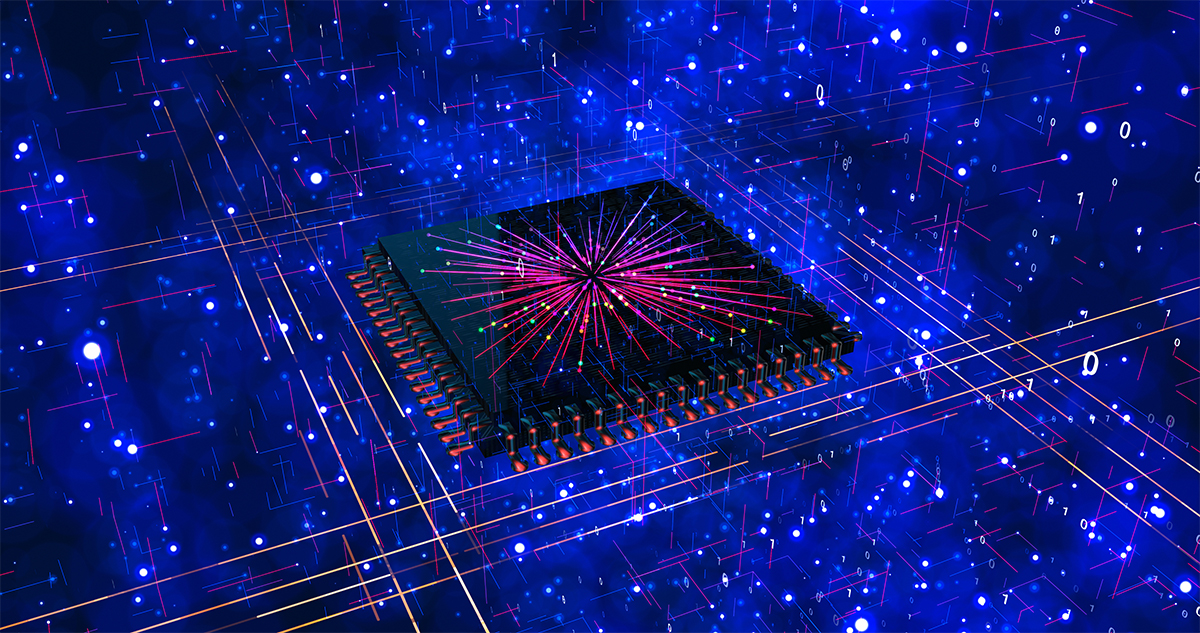
Connectivity platform
Within a smart building, there are different ways to transport digital control signals and operational information. In the IoT reference model presented by the International Telecommunication Union, the fundamental layer underlying the logical data structures of the higher-level functions in a network is called the network layer. It defines the means of transmitting data as well as the physical and electrical specifications of the data connection.
A communication protocol is also defined by the network layer to established and connection between two directly connected nodes over a transmission medium. Traditional building management systems use protocols such as BACnet, LonWorks, KNX and Modbus. Physical connectivity is provided by various transmission mediums such as copper cables, fiber optical cables and air. BACnet stands out as the dominant protocol in building automation. But this protocol, along with LonWorks and KNX, is used for the control of the whole building. The issues of cost and complexity arise when these protocols are used for lighting control.
Conventional building management systems generally incorporate a DALI (Digital Addressable Lighting Interface) subsystem to provide dedicated lighting control. The use of BIoT makes IP as a unifying protocol for all communications between the endpoints and the IoT platform. Digital networking eliminates the need for centralized equipment. Building management systems have evolved from using hierarchical connectivity to adopting a much flatter architecture. This trend leads to a proliferation of connectivity solutions competing for networked lighting control. These options include Power over Ethernet (PoE) as well as 5G and non-cellular connections, such as LoRaWAN, Zigbee, Bluetooth Mesh, and Wi-Fi.
Power over Ethernet (PoE)
The wired communication technology that has been getting the most attention is PoE. PoE enables safe transmission of DC power and high bandwidths data communication over a copper Ethernet LAN cable. A basic PoE system consists of a PSE (Power Sourcing Equipment) in a switch or hub, a PD (Powered Device) in a powered end station such as an LED luminaire, a two- or four-pair twisted cabling system, and a power supply. The PSE accepts low-voltage direct current (DC) power from the power supply and sends power through the Ethernet cable to the rest of the system. A PD takes power off the cable to operate itself. The PSE can be divided into two basic types: endspans and midspans. Endspan systems are essentially Ethernet switches with an embedded power supply to deliver power and data. Midspan systems, also referred as PoE injectors, reside anywhere within the 100 m length of Ethernet cable for injecting power on the Ethernet connection of an existing Ethernet link. Power can be fed into a PoE system in two ways: Alternative A and B. Alternative A uses the data lines through phantom feeding while Alternative B separates the data and the power conductors using a technique called spare pair feeding.
PoE requires little configuration or management as a PSE will run a discovery process to automatically determine whether a device connected to a port is a valid PD or not, and its power class. The newest IEEE 802.3bt standard (Type 4) pushed the power limit to 100 watts, which is adequate to operate all the common types of indoor LED lighting systems. LEDs run natively on DC power. PoE-based LED lighting eliminates the needs for AC-DC power conversion which accounts for a substantial power loss in conventional line voltage alternating current (AC) LED luminaires. As a result, PoE luminaires produce more lumens as compared to AC-powered LED systems of the same wattage.
Wireless networking
Despite the high-bandwidth communication and slashed costs on electrical cabling and installation of PoE networking, radio-frequency (RF) wireless control continues to gain momentum in smart building and professional lighting applications. The roll-out of 5G is significantly pushing the limits of networking and automation. 5G networks support pervasive communication and real-time transmission of massive data and allow the deployment of IoT devices in places where cables and other wireless networks cannot reach. LoRaWAN which extends the LoRa physical communication layer onto IP-based networks represents the most promising low-power wide-area network (LPWAN) technology for smart building applications. Wi-Fi is another technology being explored for BIoT, but it takes a lot of processing power and does not define the application layer needed for machine-to-machine communication.
For smart lighting applications in commercial buildings, mesh networking is gaining major traction. The mesh network is best suited for IoT applications because of its ability to work as one seamless interoperable system while addressing reliability and scalability challenges for commercial building automation. Intelligence is replicated in every node within the network and, in such a way, provides redundancy of having multiple pathways and allows to extend the reach in large buildings.
Of the available mesh network technologies, Bluetooth Mesh and ZigBee have received the most prominence. Bluetooth mesh networks, specified to support up to 32,000 nodes per network with a maximum throughput of 1,000 Kbps, provide peer-to-peer communications and multipath message relay. ZigBee networks provide a maximum communication rate of 250 kbps and can support up to 65,000 nodes. While Bluetooth mesh networking requires no centralized hub or routing nodes, Zigbee networking begins with a coordinator which acts as the arbiter for decisions of the network and serves as an internet gateway.
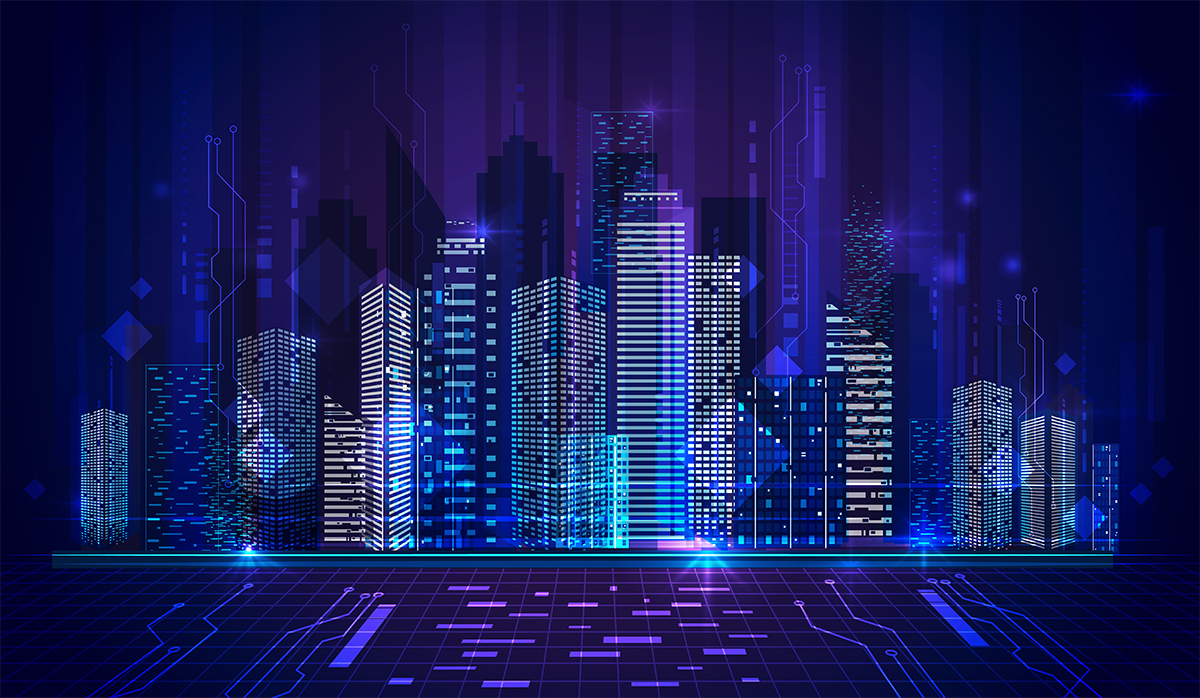
System design
A connected lighting system has two building blocks: the light engine and the digital controller. The light engine includes one or more LED modules with each formed by an integrated LED array or having an array of discrete LEDs populated on a metal core printed circuit board (MCPCB). The LED modules have integrated heat sinks for thermal management and may be fitted with secondary optics that control light distributions. The LED driver that regulates power to the LEDs is nominally a part of the light engine but it works seamlessly with the digital controller to deliver lighting in an intended fashion.
Many control strategies as well as color mixing applications (for tunable white or dynamic color changing lighting) require the LED driver to have pulse width modulation (PWM) or continuous current reduction (CCR) dimming capability. A digital controller is generally a system-on-chip (SoC) comprised of a microcontroller and a transceiver. The microcontroller is a small computer with a processor, memory, and input/output (I/O) ports. It operates using embedded software (firmware) and works in conjunction with the transceiver to enable two-way communication and application deployment at the edge.


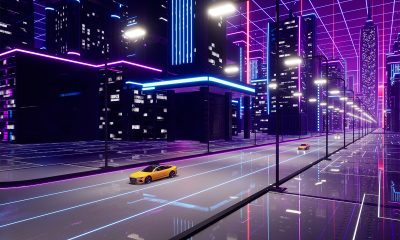
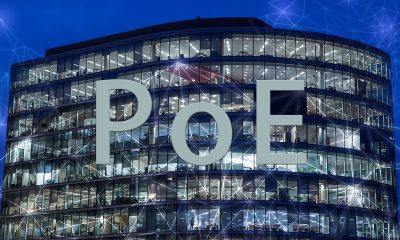




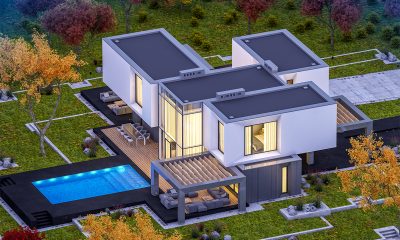

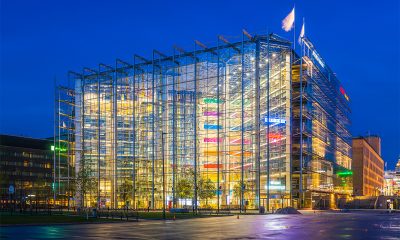

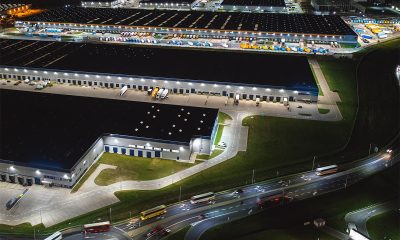






Loading...